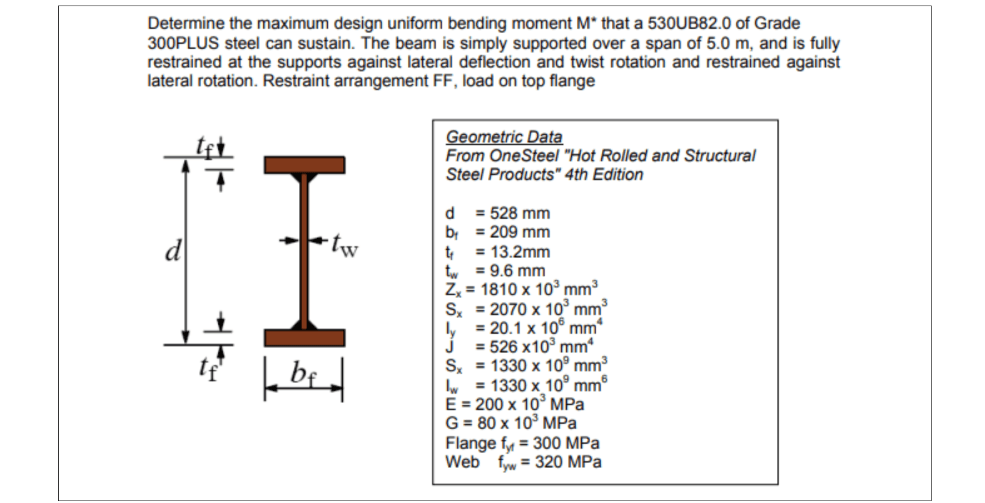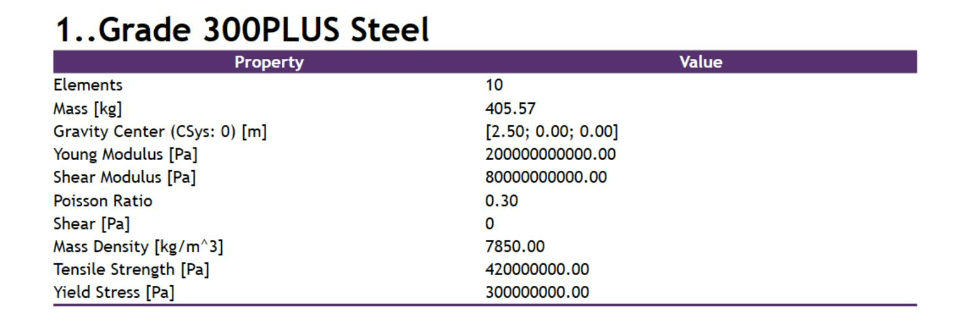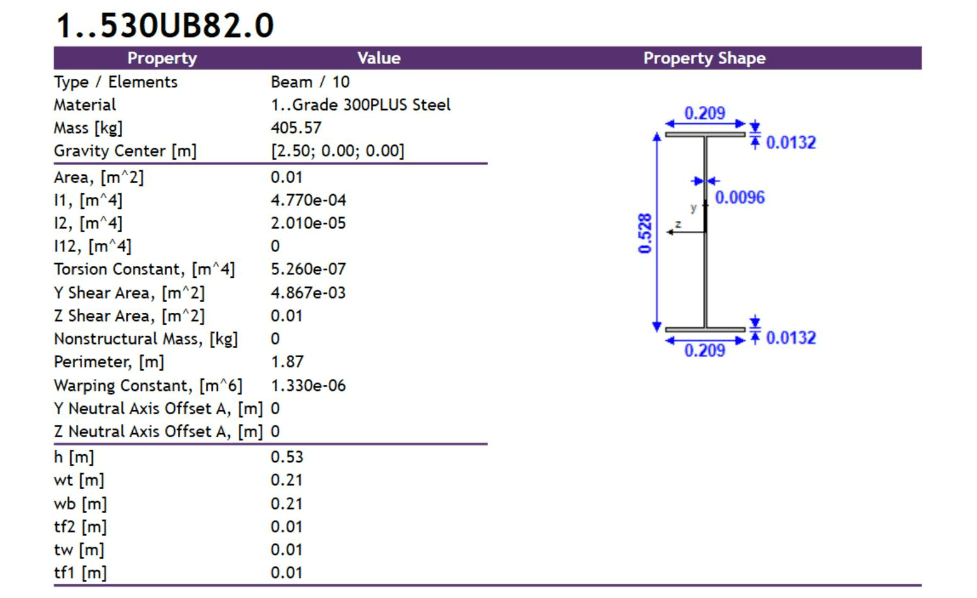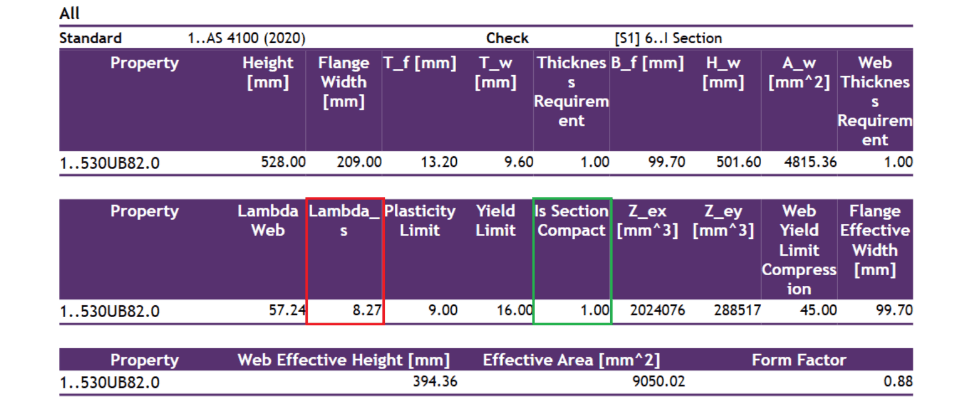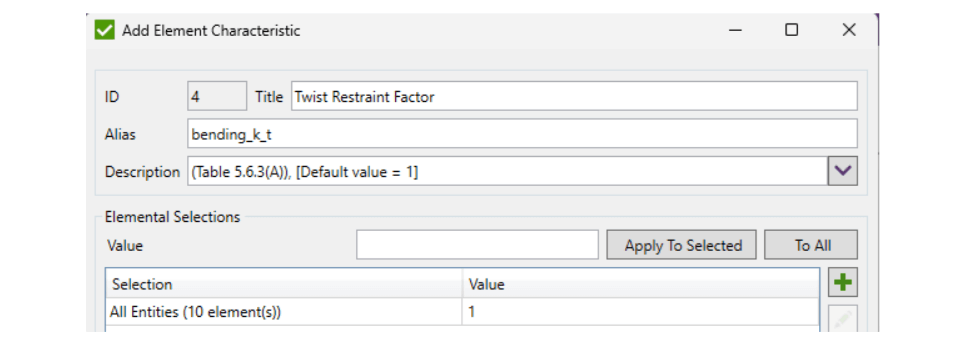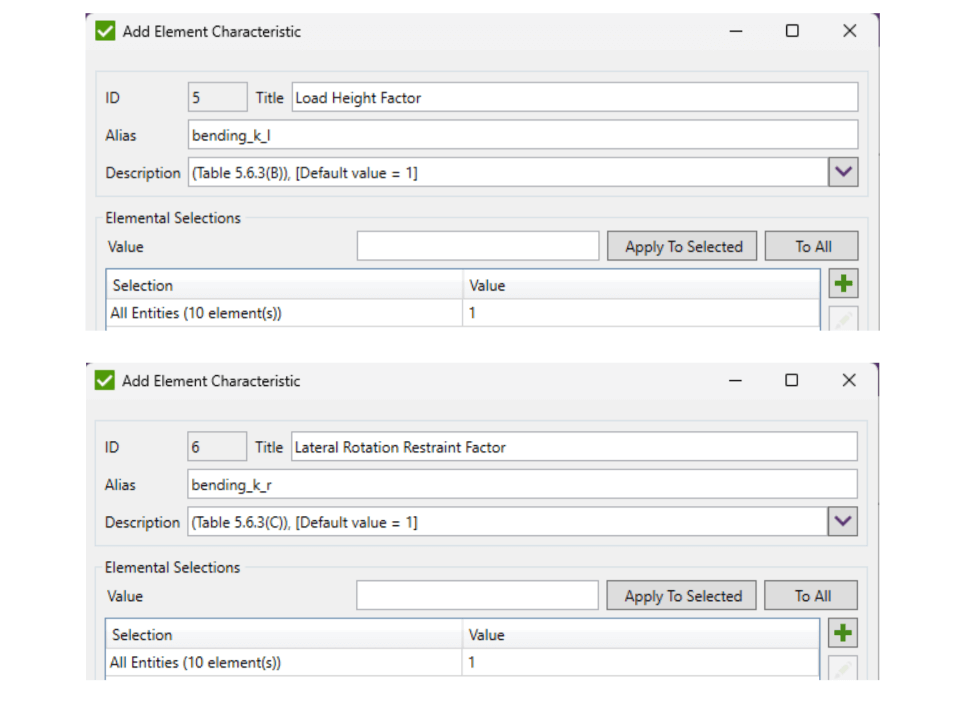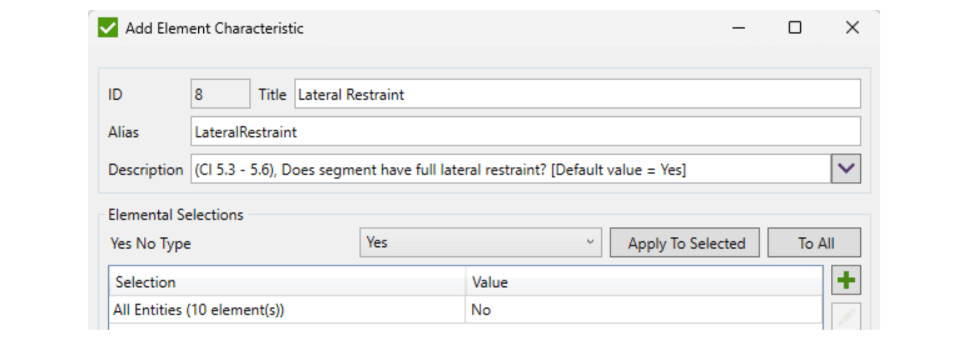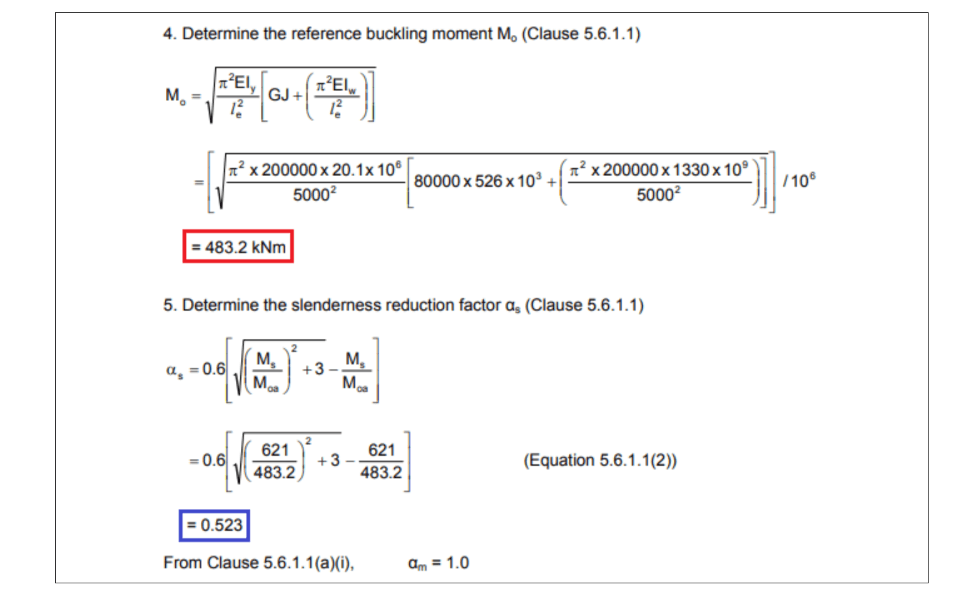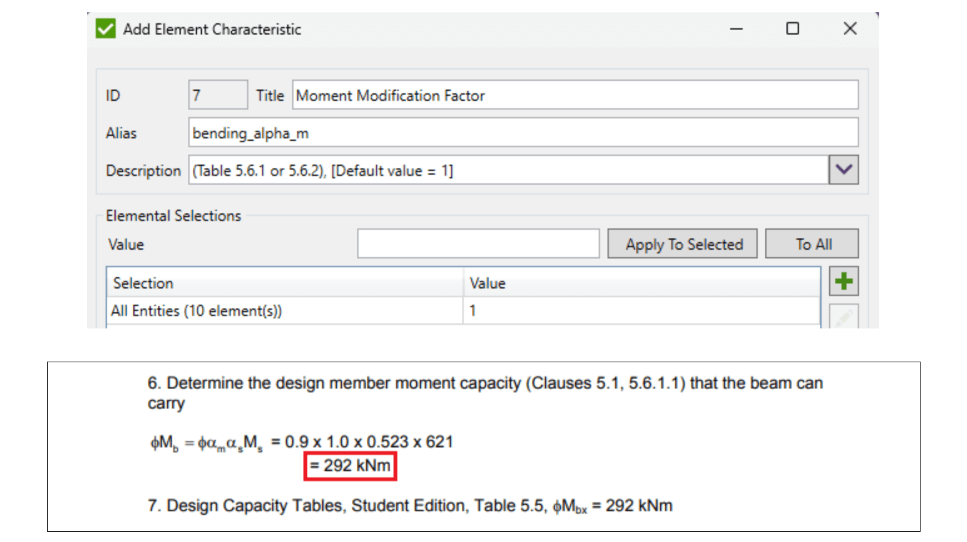AS 4100. Example 2: Determine the Design Member Moment Capacity of a Laterally Unrestrained Universal Beam
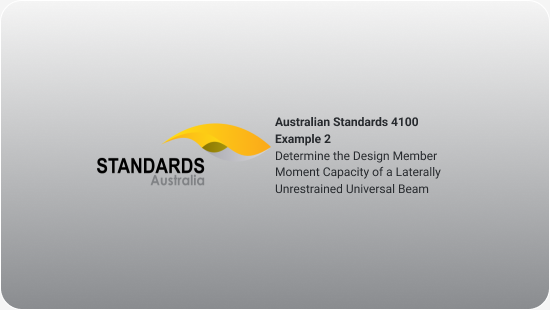
This benchmark was prepared based on
Australian Steel Institute (ASI) Steel Structures – Sample Worked Problems to AS 4100
using
SDC for Femap and Simcenter Femap Version 2022.2
This AS 4100 benchmark focuses on determining the Design Member Moment Capacity of a laterally unrestrained beam. We’ll dissect input parameters, FEA modeling (addressing potential software limitations), and SDC Verifier 2024 R1 setup. You’ll see how results compare to theoretical calculations, gaining key insights for accurate code compliance.
Based on the input parameters presented above a beam model was created with the following material and property definitions:
Note: Because of the limitations of the FEA software the cross-section is defined without fillets, so slight differences in geometrical properties are to be expected.
Where possible these values have been modified manually (as for the moments of inertia I1 and I2, torsion constant and warping constant in the table above), but some are calculated internally without the possibility to modify them (e.g. plastic section modulus).
Additionally, the yield stress is defined with one value for the beam property, so it’s the same for both the web and the flange, while in the problem definition, there is one value for the flange – 300 MPa, and a different value for the web – 320 MPa, so the lesser value was chosen.
The above parameters are checked within a Property Check, in this case one defined for I-Beam cross-sections.
SDC Verifier follows the logic presented in the standard, where out of the two checked slenderness values (for the flange and for the web) the governing one is picked as the section slenderness (Lambda_s in the above table).
The value of the effective section modulus (Z_e) is lower than in the example (2024 ∗ 103 mm3 compared to 2070∗103 mm3, so by about 2.2%), because of the mentioned limitations of the FEA software.
We can also see the flag Is Section Compact which confirms that the section is in fact compact (1.00=yes).
As we can see the obtained value is slightly lower than in the example, but that’s due to the already mentioned lack of possibility to define fillets for the cross-section in the FEA software.
If we were to increase it by the 2.2% that was lost due to this inaccuracy in the plastic section modulus, we would obtain values that completely match (607223 Nm∗102.2 %=621 kNm).
To calculate the effective length the following factors have been defined in the Characteristic section of the SDC Verifier according to the example:
Additionally, the segment has been defined as not having full lateral restraint, otherwise following the logic of the standard the nominal member moment capacity Mb would be taken as the nominal section moment capacity Ms of the critical section.
As we can see the value of the effective length matches completely.
The reference buckling moment Ms and the slenderness reduction factor as are both calculated internally (not displayed in tables), but can be checked in the calculation details:
As we can see the reference buckling moment value matches completely and the slenderness reduction factor value is slightly above the one in the example due to using the underestimated nominal moment section capacity value in its calculation.
The moment modification factor am is defined as another Characteristic:
When calculating the nominal member moment capacity (M_bx) SDC Verifier follows the logic of the standard as well, so the multiplication by the capacity factor ? happens later when comparing it to the design bending moment.
That’s why the value obtained in the table has to be additionally reduced by ? for the purposes of the calculations in this example:
ф∗Mbx=0.9∗321778 N=290 kNm
As we can see the obtained value is slightly lower than in the example, but that’s due to the already mentioned lack of possibility to define fillets for the cross-section in the FEA software.
If the plastic section modulus could be modified to precisely represent the value in the example the obtained nominal member moment capacity value would match completely.
Conclusion
Despite minor discrepancies due to FEA software limitations, this benchmark highlights how SDC Verifier aligns with the AS 4100 standard for calculating Design Member Moment Capacity for laterally unrestrained beams. By understanding these nuances, you can confidently validate your designs and ensure structural integrity.
This post uses screenshots from the Steel Structures Sample Worked Problems to AS 4100 document



